“I remember The Great Khali as a villainous anti-hero,” says South African photographer Carl van der Linde, recalling the WWE fandom that permeated his youth, and his introduction to the seven-foot wrestler. For him, wrestling was “a significant part of my life growing up in the 90s and early 00s,” he says. “The characters were heroes to my friends and I.”
Making his first appearance with All Pro Wrestling in 2000 as Giant Singh, The Great Khali — real name Dalip Singh Rana — signed with World Wrestling Entertainment in 2006. He became the WWE’s first Indian-born World Heavyweight Champion the following year, after he defeated Batista and Kane (David Bautista and Glenn Thomas Jacobs) with a single move during a battle royal in a July edition of SmackDown!.
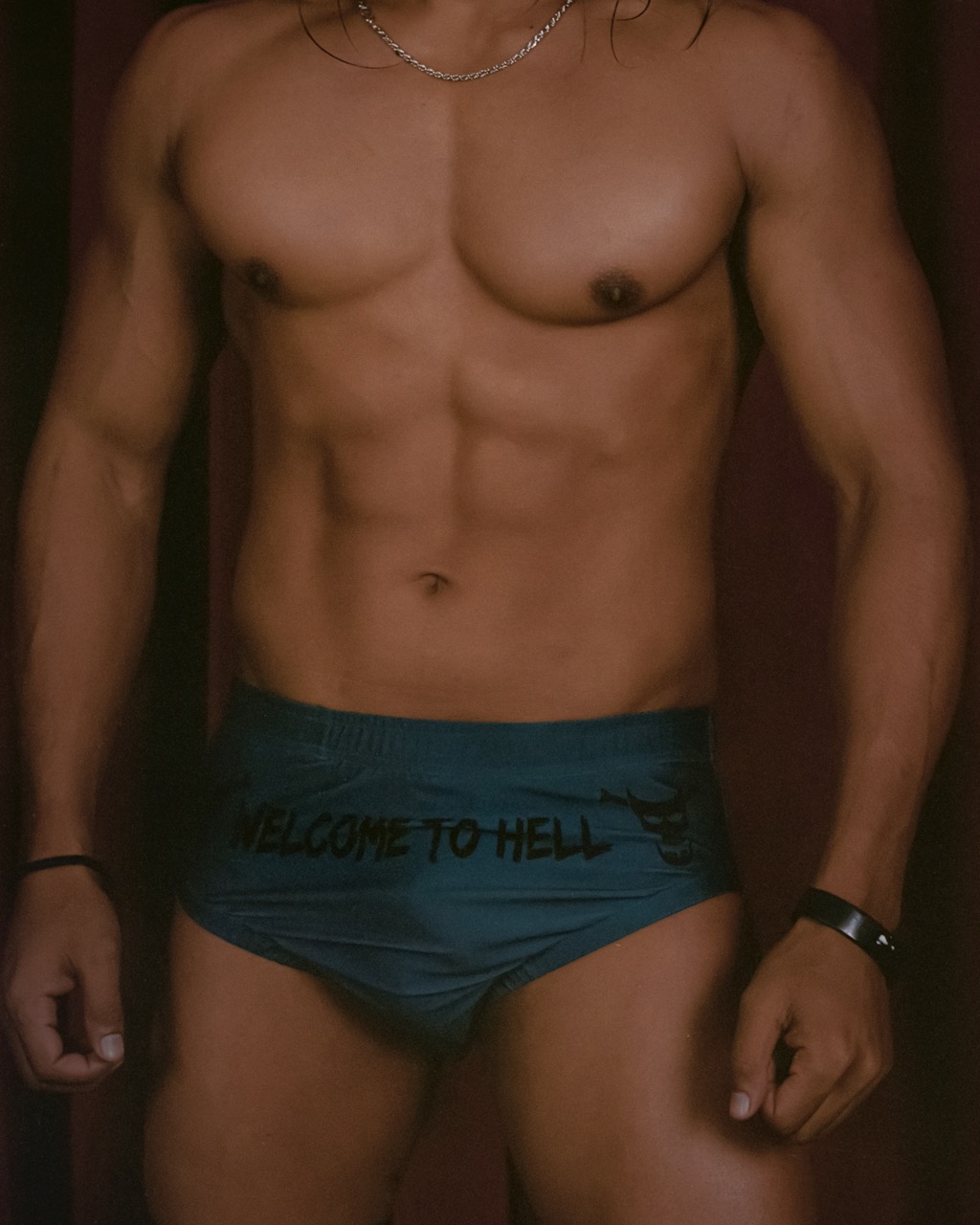
While Dalip was inducted into the WWE Hall of Fame in 2021, his contract with the company ended in 2014, and in early 2015 he set up his own academy, the Continental Wrestling Entertainment (CWE) in Jalandhar, Punjab, the same city in which he began his training prior to moving to America.
Earlier this year, Carl, who’s previously shared with us his stories of combat fighters in Ukraine and street culture in Zanzibar, spent three weeks at the school, hanging out with the former-heavyweight and documenting the students for his new series, Our Leader.
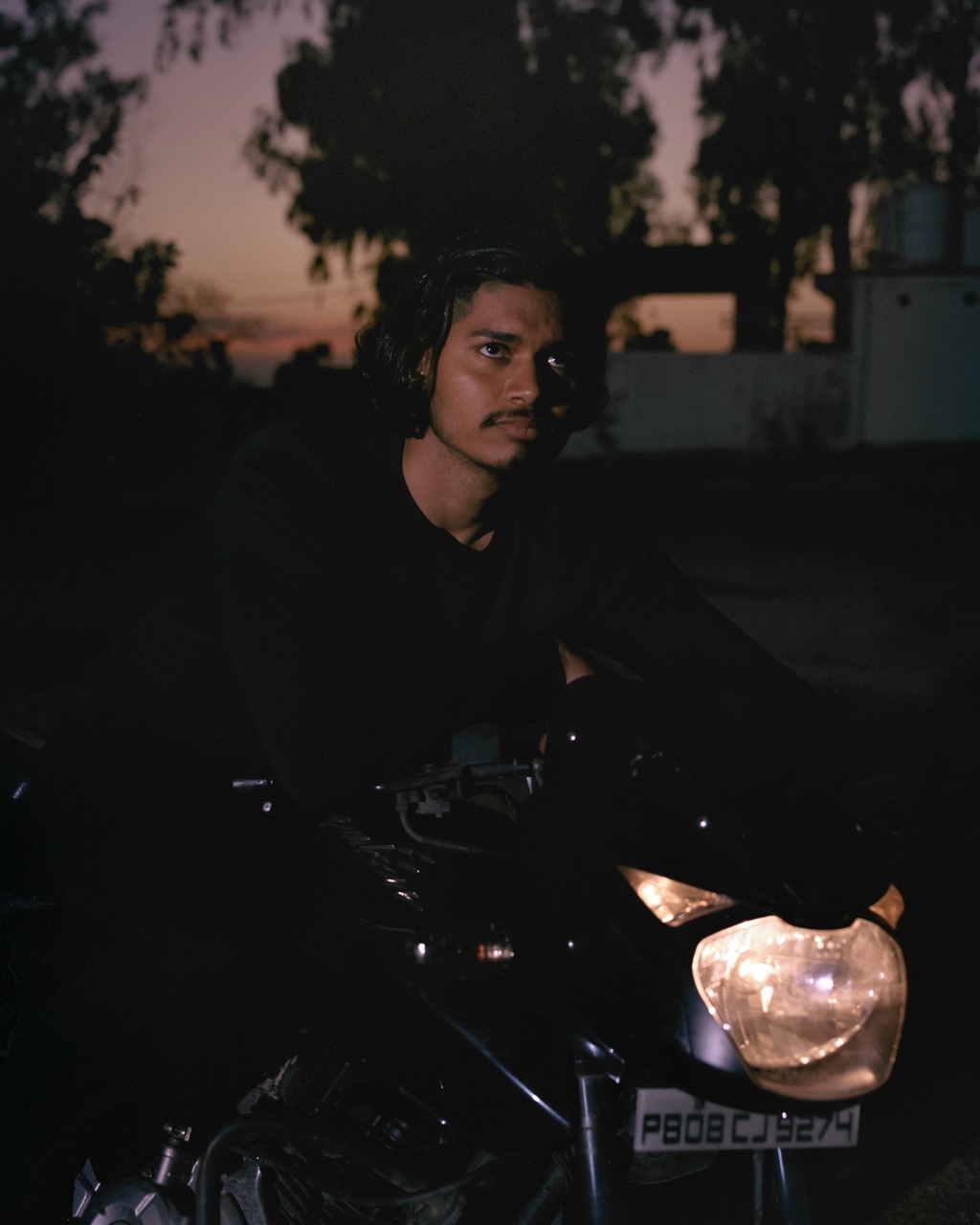
“There was a meme page reposting videos from The Great Khali’s Instagram,” Carl explains, detailing the project’s earliest starting point. The page would reframe the videos as satirical motivational tools, captioning them with the tag ‘Our Leader’. Eventually Carl wound up following his actual page, quickly becoming intrigued by other videos from the academy. “The content generated by these Indian wrestlers has to be seen to be believed — from scripted kayfabe (drama, pageantry and trash talk) to public humiliation and voyeuristic shithousery — all to promote their characters and ultimately go viral, or get noticed by professional leagues in the US.”
A unique undertaking in a country where cricket reigns (according to a BARC India report, 93% of all sports viewers in 2018 were watching cricket), the academy’s student body is predominantly young men in their teens and early twenties, each with aspirations of replicating some element of the former champion’s triumphs. Despite a challenging landscape — for reasons financial, and sometimes visa/immigration-related — the school currently has over four million subscribers on YouTube, while Kavita Devi and Dilsher Shanky are proven CWE success stories, signing with WWE in 2017 and 2020 respectively. “It’s somewhat the Indian version of the American dream,” Carl says, alluding to The Great Khali’s own trajectory: growing up in a village in the Sirmaur district of Himachal Pradesh, launching a successful wrestling career, and appearing in Hollywood films opposite Adam Sandler and Steve Carrell, as well as Bollywood pictures with Rajpal Yadav and Sahil Khan.
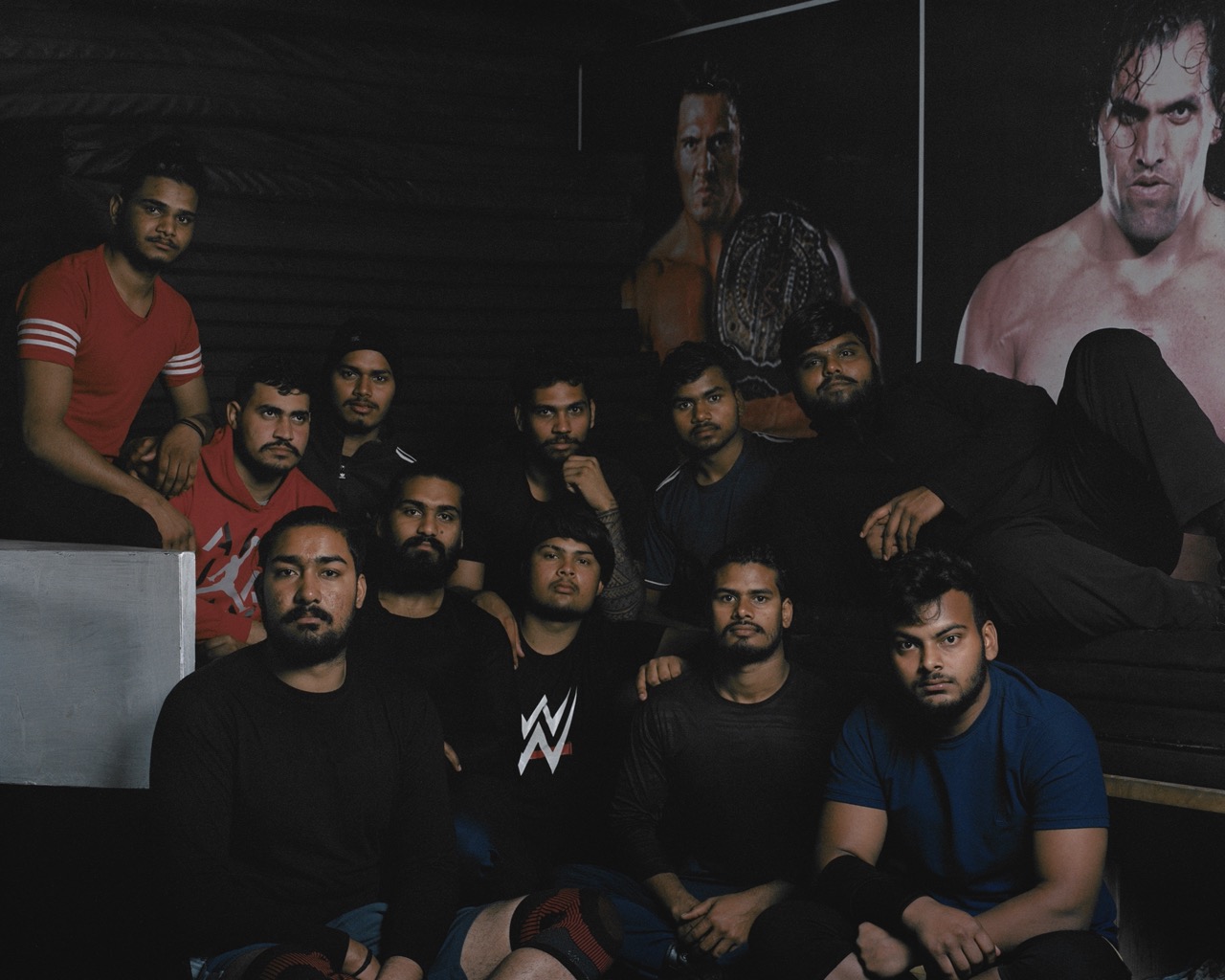
“At first they were wary,” Carl adds, recalling his initial interactions with the students, “but they’re mostly showmen, so they were naturals in front of the camera. Knowing this might advance their careers, they were easy to convince.” Others, he notes, were shy, effectively using the academy as a vehicle for improving their confidence and public speaking skills. In his photographs, all these elements are reproduced, from moments of calm to celebratory portraits with championship belts, to mid-fight ring shots and of course, portraits of The Great Khali. “Meeting him was incredible,” Carl says. “My hand disappeared into his when our palms met. I could sense the immense respect he commands — and has rightfully earned.”
Perhaps one of the most striking photographs of Our Leader is Chotu Lal Upside-down. Recently shortlisted for the Taylor Wessing Photo Portrait Prize, which returns to the National Portrait Gallery in November for the first time since 2020, the image features three students: two are standing side by side, while a third dangles between them. “It’s undeniably encouraging to be acknowledged,” Carl says of the recognition. “And an intriguing reflection, in terms of the vast distance between the subjects and the location where the portrait will be displayed. It’s a beautiful and humbling contemplation — the duality, the giving and the taking.”
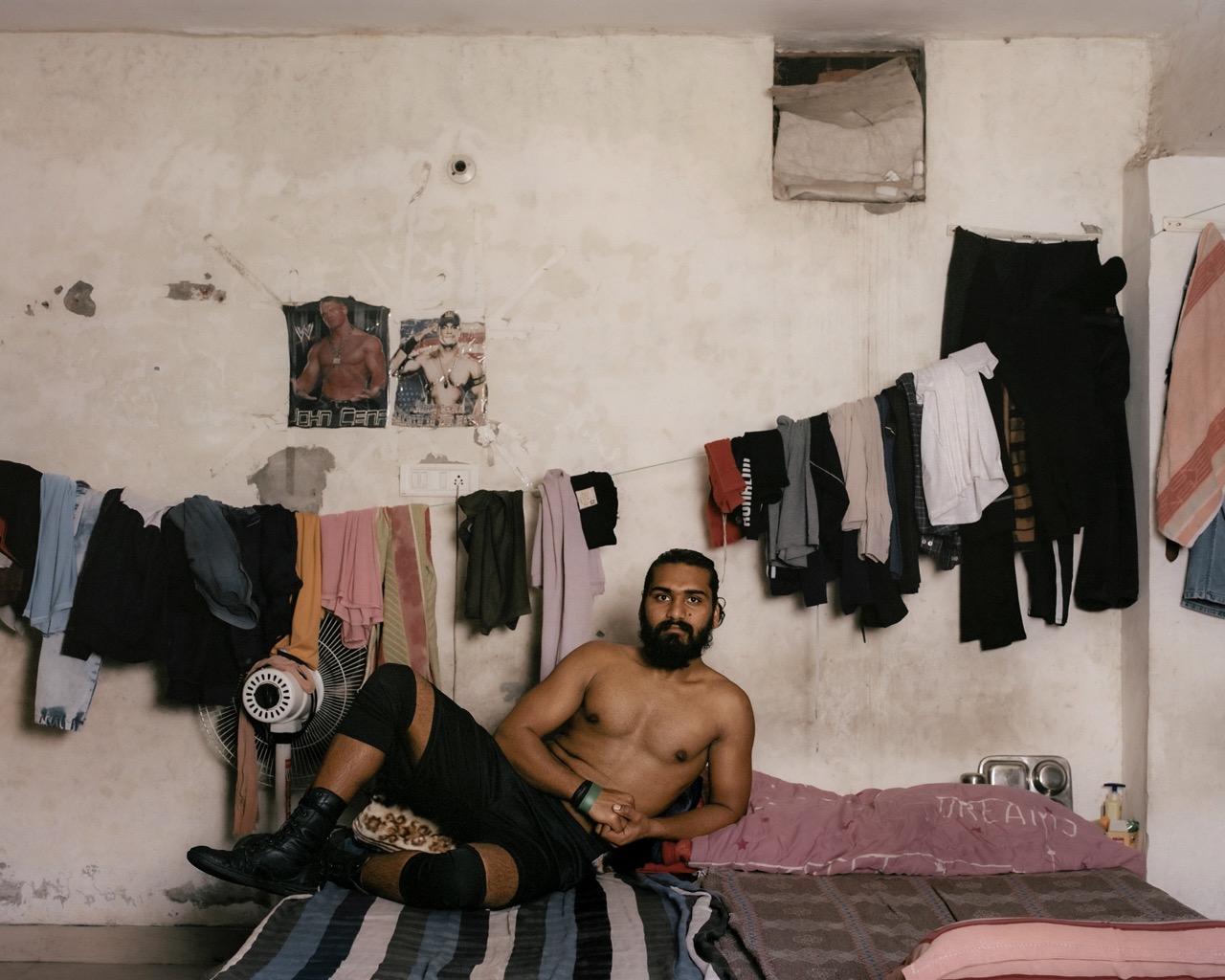
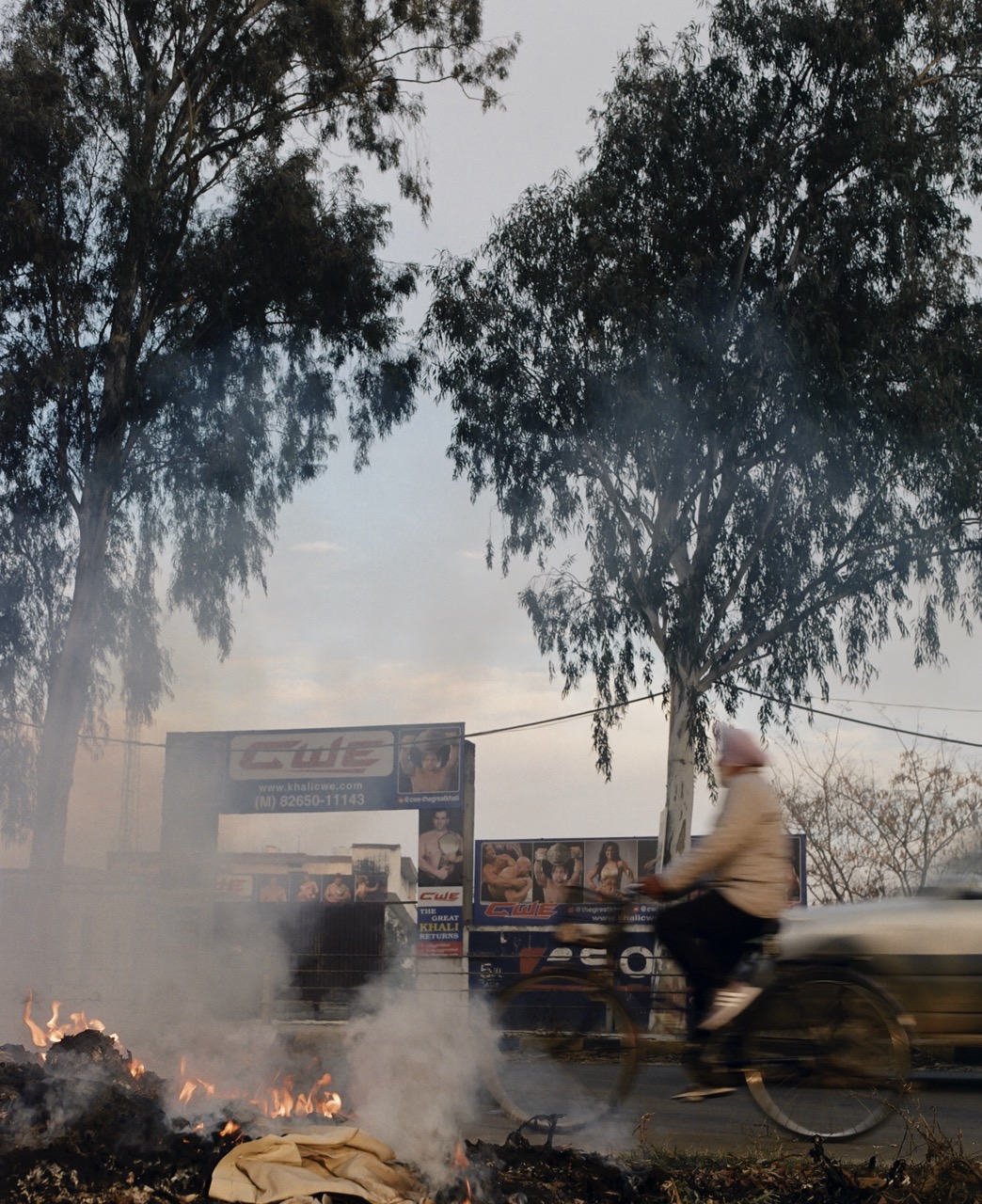
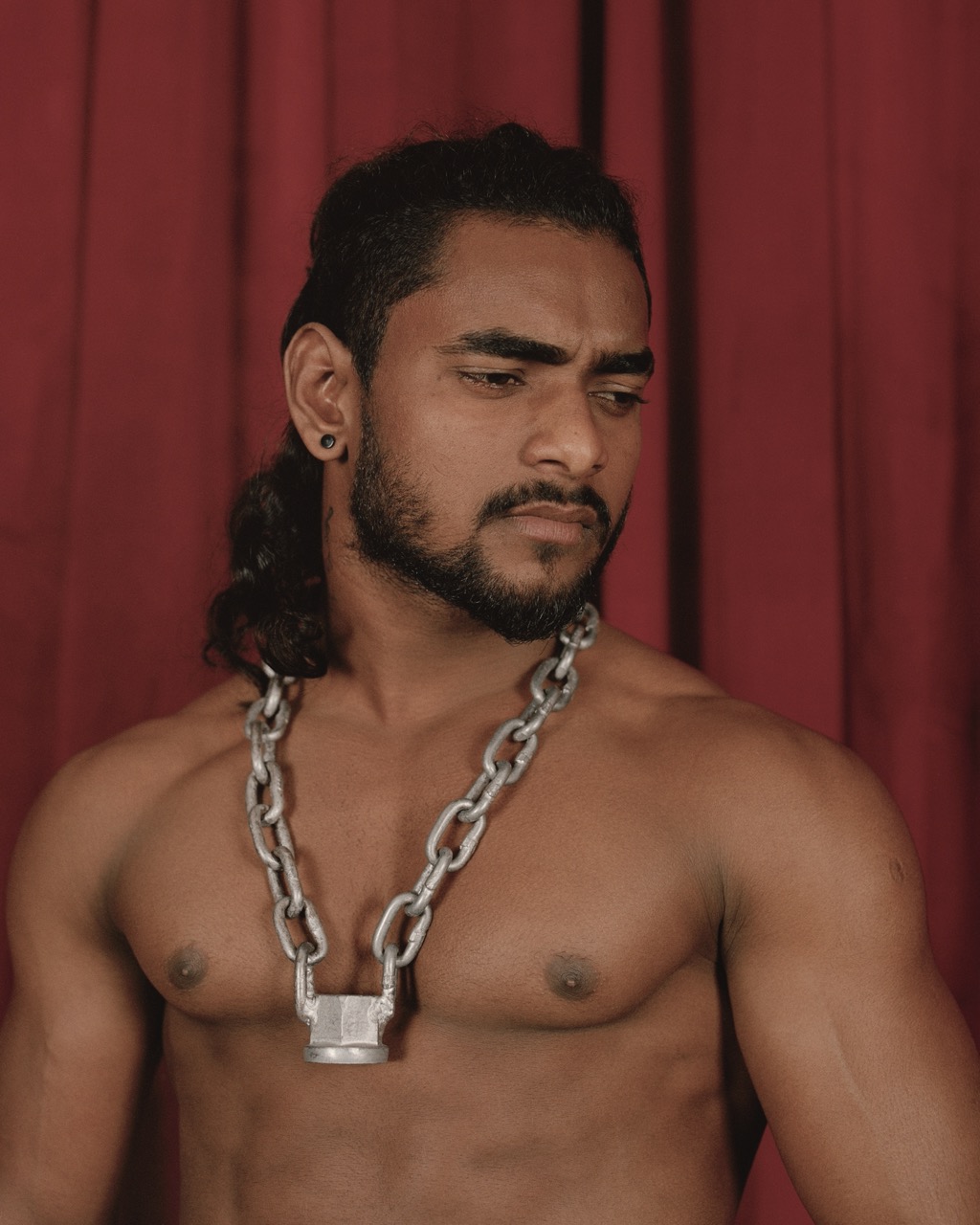
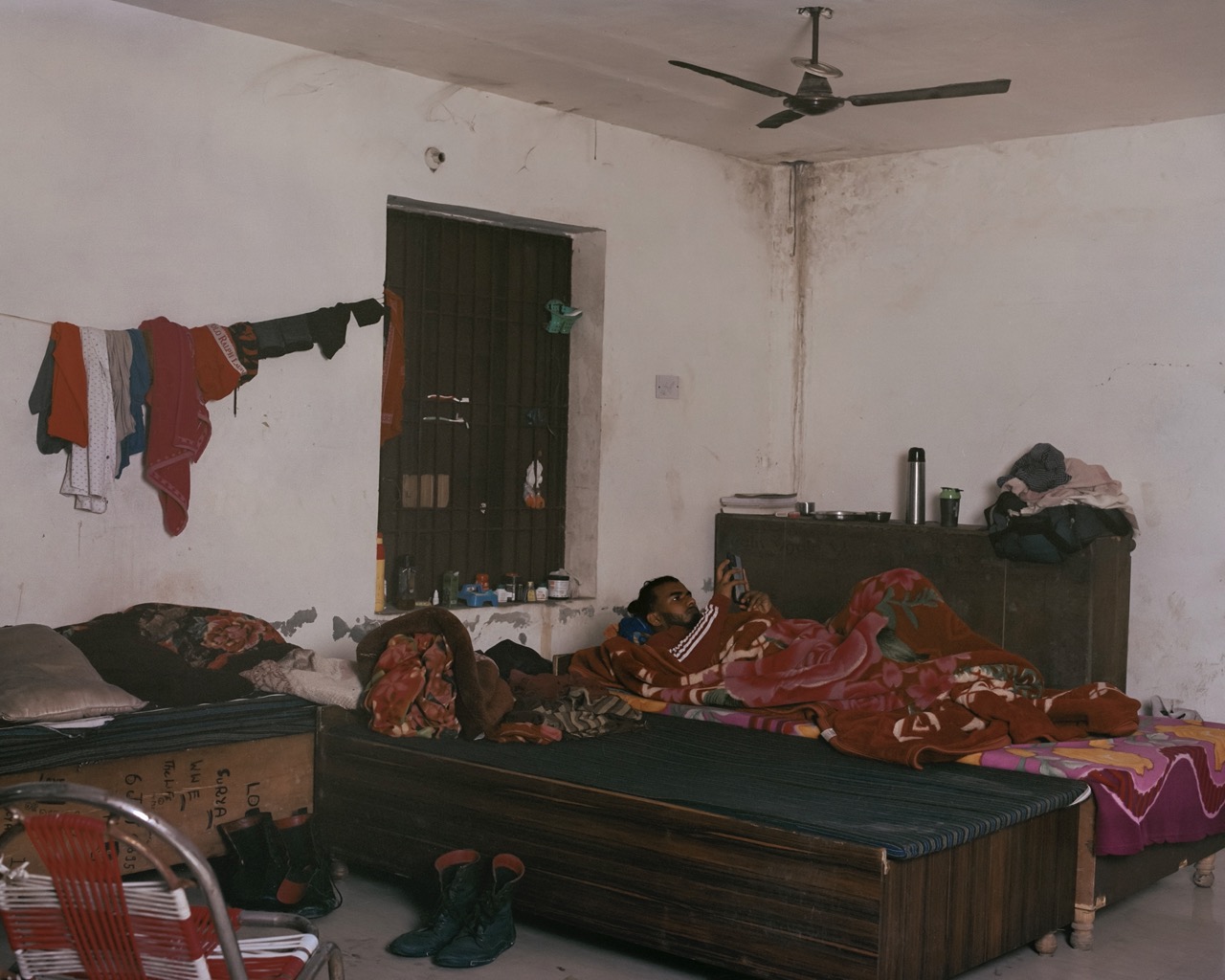
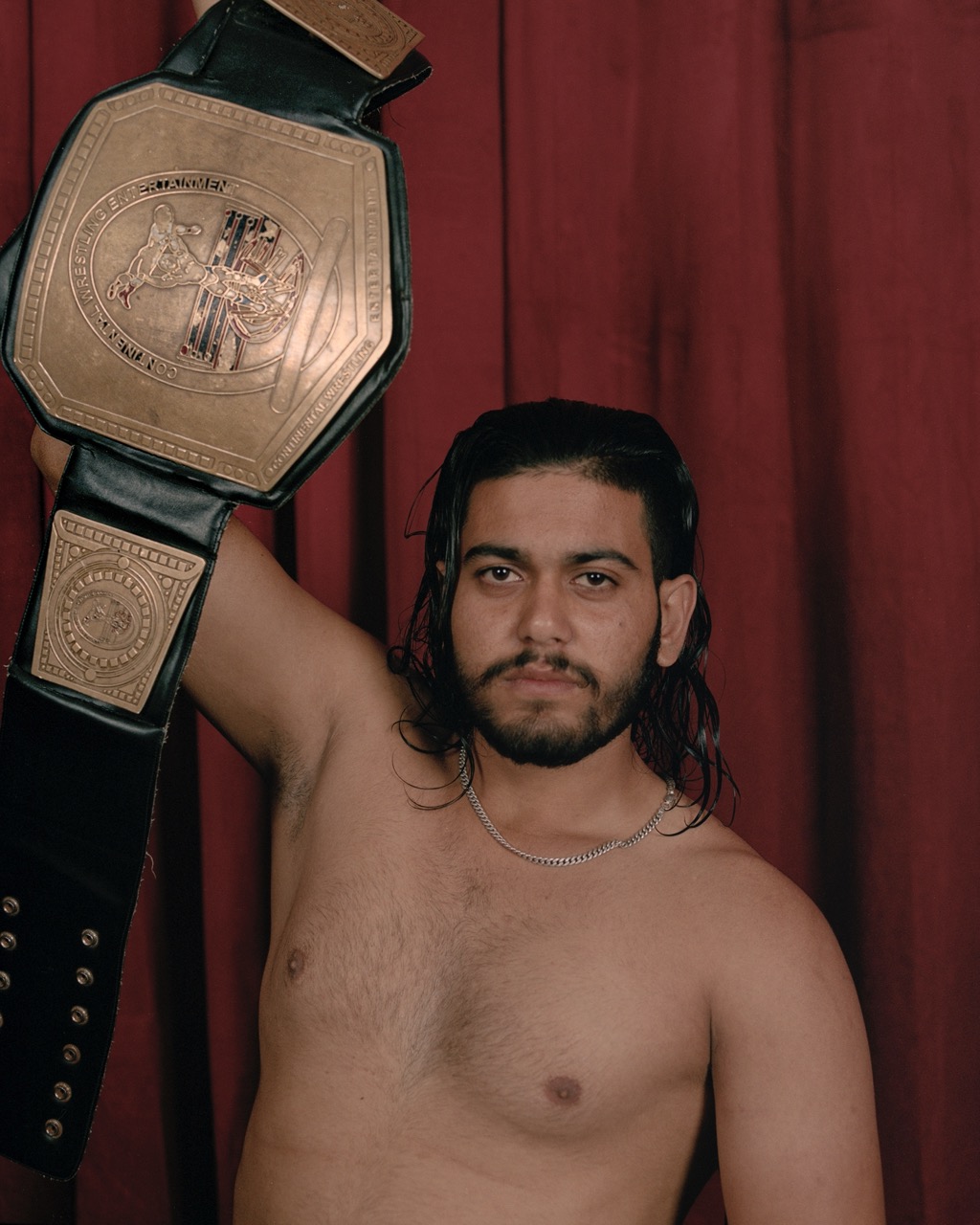
Credits
All images courtesy Carl van der Linde
